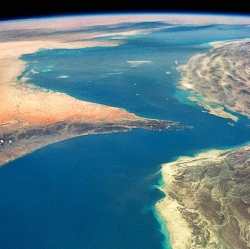
Satellites have become smaller, cheaper, and easier to make with commercial off-the-shelf parts. Some even weigh as little as one gram. This means more people can afford to send them into orbit. Now, satellite operators have started launching mega-constellations—groups of hundreds or even thousands of small satellites. Instead of one large satellite, groups of small satellites can provide coverage of the entire planet at once. Civil, military, and private operators are increasingly using constellations to create global and continuous coverage of the Earth. Constellations can provide many functions, including climate monitoring, disaster management, or satellite broadband.
But to provide coverage of the entire planet with small satellites requires a lot of them. On top of this, they have to orbit close to Earth’s surface to reduce interruption of coverage and communication delays. This means they take up an already busy area of space called low Earth orbit, the space 100 to 2,000km above the Earth’s surface.
Satellites are regulated at the national level and through licensing, guided by the principles of the Outer Space Treaty of 1967. Though the terms constellation or mega-constellation are not found in the treaty, they are considered space objects, like all other satellites.
As procedures and regulations vary from country to country, the challenge is how to govern mega-constellations without creating legal fragmentation. It is imperative that the topic is discussed at the international level.
Yet currently, there is no legally binding definition for a satellite constellation, nor for the newer term mega-constellation.
Most satellites in low Earth orbit are operating between 600 and 800km above sea level. This is considered a congested area, as there are lots of satellites there already. Small satellites have shorter lifespans than the larger satellites, which typically orbit above low Earth orbit.
However, it can still take up to about 150 years for satellites to be removed, by re-entering the atmosphere and burning up, if they are about 750km above sea level. Some are removed purposefully, through controlled re-entry, and others are designed to fall in an uncontrolled way.
This is not only true when it comes to physical space, but also radio use. To communicate, satellites use the radio spectrum. With the increase in mega-constellations, there is a danger of operators «warehousing» radio frequencies, stockpiling them before they actually need them.
If low Earth orbit becomes overcrowded with satellite and mega-constellations, avoiding collisions will become more difficult. In September 2019, the European Space Agency had to fire the boosters on one of its satellites to get it out of the way of another satellite, otherwise the two would’ve collided.
Hopefully, mega-constellations will be discussed by member states at the UN as soon as they are able to do so. Though work in the committee can be slow and highly political, international guidelines along with national licensing procedures need to add considerations for mega-constellations.
